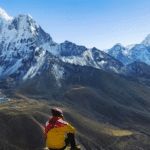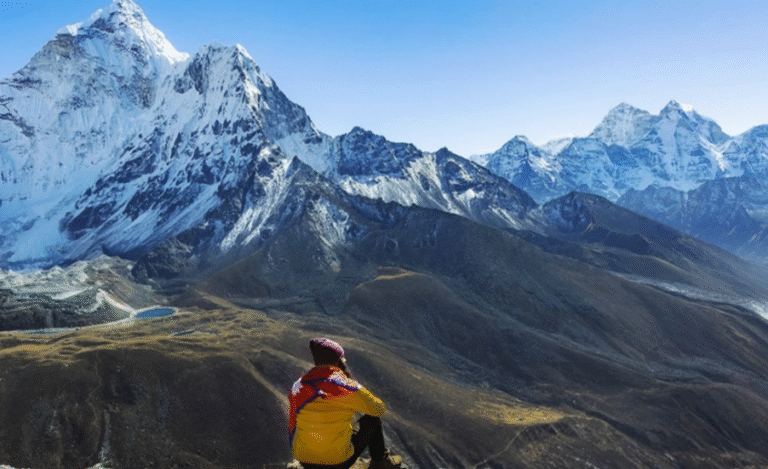Everest Base Camp Trek -The Trip of a Lifetime, Gorak Shep, The Journey to Everest. Almost anyone can make it to Everest Base Camp, but you must prepare physically and mentally for this. Smart packing is prime here, and one of the main things to keep in mind as you put together your Everest Base Camp ride is your backpack. Sporting a heavy pack will quickly tire you out and position you at an even greater danger for harm and fatigue over the tough, lengthy path. But that’s where being able to percent an ultralight backpack for the Everest Base Camp Trek may be useful.
This comprehensive guide will leave no packing tip unturned as to the absolute most you will need to pack light to keep you comfortable and prepared if an emergency arises. Whether it’s your first time heading to Everest Base Camp or your fifth, one of the most crucial factors to determine is how to perfect ultralight packing for an Everest Base Camp trek and hike as efficiently as you can to the top of the world.
Why It’s Essential to Be Packing Ultralight on the Everest Base Camp Trek
It is around a 130 km return trip, if not mistaken, the altitudes shift from around 2800 meters at Lukla and more than 5300 meters at Base Camp. It’s hard hiking these heights, demanding both strength and concentration. You may slow yourself down, develop sore muscles, and have more difficulty with acclimatization if you’re carrying too much weight.
Trekkers carrying only 8–10 kg on their backs often comment on how much lighter and more comfortable they feel. This makes walking as simple and comfortable as possible while also reducing back and knee strain. Plus, the fewer pounds you have sitting on your back, the less extra stress on your overall EBC trek experience because then you can enjoy to its fullest the spectacular views and vibrant environment of the trail, rather than the added weight on your shoulder.
Ultralight Backpacking Gear Requirements
Pack Smart Plan when you pack and select multi-use, space-efficient items. So start with clothing layers that do the most work: base layers that wick moisture off of the body, a toasty mid-layer like a fleece, and a light insulated jacket. There is a lot of variation in temperature on the Everest Base Camp Trek itinerary – scorching days and near freezing nights – so think layers.
A good lightweight and compression -10°C or below down cocoon sleeping bag is essential to keeping warm on the very coldest nights spent in the teahouses at night on the Everest Base Camp Hike. Although most trekkers will rent sleeping bags on the ground, bringing your own decadently light version reduces the bulk and ensures that your liner is fresh and cushy.
Footwear is another important component. Spend money on a pair of long-lasting, broken-in hiking boots with excellent ankle support; however, don’t pass on terrific heavy or bulky ones. You can additionally limit fatigue (a few) and assist your toes to recover with a pair of lightweight hiking footwear or sandals that you wear inside the teahouses in the evening.
Preserves the essentials in journey-size bins, like a washer-friendly, biodegradable cleansing soap, sunscreen, SPF lip balm, and a mini-featured first-aid kit. p.c. a reusable water bottle, and an elective transportable water filter or purification pills — fellow hikers record first-rate water availability, but it’s not a guarantee.
You’ll also need that trekking permit, your passport, and ca, sh so you don’t have to worry about trying to find an ATM on the Mount Everest base camp tour! Have these gadgets in a zipped, accessible pocket.
How to Lose Weight Safely Without Dieting
Ultralight doesn’t need to intend to skimp on protection. Instead, it’s about bringing the right gear and bringing only what you’re going to need. Avoid overpacking and too many extra clothes for the ‘just in case’ moments – utilise layers, and larger villages like Namche Bazaar will provide laundry facilities.
Avoid carrying bulky snacks and one-time use plastics and instead pack weight-efficient, high-performance treats such as nuts, dried fruit, and energy bars that offer fuel on the move without the added weight. A small headlamp (super lightweight), a requirement in case of early morning start, late arrival time, and carrying a pair of trekking poles, is not only better for your knees when you’re going downhill, but it can also help you problem-solve your footing on more challenging terrain with no extra weight.
The backpack, for example, should be lightweight and fit snugly against your body. In case you’re planning lengthy days, these seats, which feature an adjustable suspension device and padded shoulder straps, will make a international of difference on the comfort front.
How to Pack Your Pack Like a Pro
The way you percent your bag is as essential as what you pack. Preserve anything items you need most commonly— a water bottle, snacks, a rain jacket — in of dindoorwallet so you can get to them without digging in and out of the primary compartment. Better fatigue and balance management with heavy loads closer to your back.
Instead of folding one’s clothes, roll them to save space and prevent wrinkles. SORT WHILE YOU PACK with included compression sacks or packing cubes, which allow for compression to ensure you pack everything you need.
Make sure that you have plenty of space in your pack for souvenirs or additional gear you may end up buying en route during your EBC Trek package holiday. The ability to tailor your load on the fly is crucial to managing excess in your pack.
What Not to Pack and Why
Many trekkers overpack with unnecessary weight. Don’t bring heavy electronics aside from your phone and camera, thick books that won’t get read, or more than one pair of shoes. HINT: You can do laundry along the way, so you want to pack what you need for just a few days at a time.
Heavy jackets; too many snacks; hefty toiletries — heavy, without much value. Trust in your guide’s knowledge of what you should bring vs. what you don’t need. Look for formultiple-purposee/multi-use items rather than single-source items and specialty gear – it has the potential to dramatically reduce the weight of your pack.
Body and Backpack That Is, Training Your Body as well as Your Pack
Ultralight packing complements physical preparation. The lighter you are, the less energy you dissipate on the difficult move up. Building electricity, stamina, and versatility for your legs and center earlier than the trek will lessen the effort while sporting a pack and minimise damage.
Don’t neglect intellectual coaching, too. A well-packaged minimalist pack (that keeps you from carrying too much heavy) can help you be more chill on the trail so you can relax and actually enjoy all of that beautiful scenery and local culture. You will feel that spending the Everest Base Camp Trek cost is quite a worthwhile investment of money when you complete the trek so comfortably and easily.
How to Pack for EBC Trek!
An ultralight backpack for Everest Base Camp is not just a smart packer move; it’s a game-changer. It maximizes your comfort, safety, and energy while hiking the World’s Most Legendary Hiking Route. Avoiding some of that unnecessary ultralight and multi-tasking gear, and packing a little smarter, can save weight and let you take every step without it not a chore.
And it’s a point to consider that many excellent Everest Base Camp trek packages will include professional packing tips and gear advice, which will make your pre-trek logistics less of a headache. Before you head for the trail, you’ll want to consider your gear. Shaving ounces here in cold base camp adds up to thinner, less-filthy in the end and a more pure and rewarding walk to the foot of the world’s highest mountain.









+ There are no comments
Add yours